|
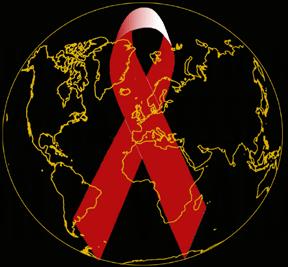
WORLD AIDS DAY
Thursday, December 1, 2011
(See sections IX, X, and XI below for numerous World AIDS Day resources.)
Guest Writer for This Unit: Minister Aaron M. Carter currently resides in Atlanta, Georgia.
The unit you are viewing, World AIDS Day, is a compact unit. This means that it is not a complete commentary of the Scripture(s) selected for this day on the calendar, nor does it have a full, supporting cultural resource unit and worship unit. Instead, to enliven the imagination of preachers and teachers, we have provided a sermonic outline, songs, suggested books, and suggested articles, links, and videos. For additional information see World AIDS Day in the archives of the Lectionary for 2008, 2009, and 2010. In 2008, 2009, and 2010, World AIDS Day was celebrated with the First Sunday of Advent. 2011 is the first year that the African American Lectionary has posted compact units for moments on its liturgical calendar.
I. Description of the Liturgical Moment
Pastor Delman Coates wrote in the 2009 African American Lectionary commentary for World AIDS Day:
The World Health Organization established the observance of World AIDS Day in 1988 to help government and non-profit organizations increase awareness of the HIV/AIDS epidemic.1 It is observed annually on December 1. According to the U.S. Department of Health and Human Services, there are 33.2 million people worldwide living with HIV/AIDS.2 In the United States, approximately 38% of the AIDS deaths are among African Americans.3
In recent years, African American church leaders have made a more concerted effort to educate their congregations on the impact of HIV/AIDS in the African American community. These efforts involve addressing the general silence within many churches about HIV/AIDS, its transmission, and matters of sex and sexuality more broadly.
Advent marks the season on the Christian calendar for celebrating the birth of Jesus Christ. Advent, which means “coming” or “arrival,” is a time of hope and anticipation. As Christian churches celebrate the hope embodied in the birth of Jesus Christ, they simultaneously anticipate his return to reconcile the world to God. This dual celebration of past and future reminds us that Christ has already come as our hope of salvation, that he is among us in the world today as our source of comfort and strength, and that he will come again to reign in victory with all power in his hands.4
The union of World AIDS Day and the First Sunday of Advent is fitting because it enables clergy leaders to relate the hope of God in Christ to the experience of those living with HIV/AIDS. Observing Advent and World AIDS Day at the same time provides a perfect opportunity for the church to show the depths of God’s love and the breadth of God’s saving grace for all of God’s children.
Dr. Luke A. Powery wrote in the 2010 African American Lectionary commentary for World AIDS Day:
“He [Jesus] came not to be served, but to serve” (Matthew 20:28). He came into the world on a mercy mission to save, heal, and touch the world, especially its outcasts. On this special Sunday we focus on victims of AIDS who are often treated as outcasts in our society.
World AIDS Day was established on December 1, 1988, by the World Health Organization. It is observed December 1 every year. World AIDS Day is about raising money, increasing awareness, fighting prejudice, and improving education as it relates to HIV/AIDS. It is a day that reminds people that HIV/AIDS has not gone away, and that there are many people, even in the Church, whose bodies are decaying because of it. Particularly in the Black Church, observing this day in connection with the ministry of Christ is significant because “the darker your skin is, the more likely you are to become infected with HIV/AIDS.”5 The estimated lifetime risk of becoming infected with HIV is 1 in 16 for black males and 1 in 30 for black females, a far higher risk than for white males (1 in 104) and white females (1 in 588). “To date, over 230,000 African Americans have died of AIDS—nearly 40% of all total deaths—and of the more than 1 million people living with HIV in the United States of America today, around half are black. And yet, as a racial group, African Americans represent just 12% of the US population.”6
This Sunday will raise awareness of AIDS in the black community specifically, but it will also remind us that Jesus came to touch and heal the ostracized of society; just as he comes today to touch and heal those with AIDS. This emphasis on what Jesus came to do and continues to do will be revealed through singing, praying, preaching, and other modes of expression.
With these words from past commentators I offer a sermonic outline for World AIDS Day 2011.
II. World AIDS Day: Sermonic Outline
A. Sermon Focus Text(s): 1 Corinthians 12:20-31 (New Revised Standard Version)
(v. 20) As it is, there are many members, yet one body. (v. 21) The eye cannot say to the hand, ‘I have no need of you’, nor again the head to the feet, ‘I have no need of you.’ (v. 22) On the contrary, the members of the body that seem to be weaker are indispensable, (v. 23) and those members of the body that we think less honourable we clothe with greater honour, and our less respectable members are treated with greater respect; (v. 24) whereas our more respectable members do not need this. But God has so arranged the body, giving the greater honour to the inferior member, (v. 25) that there may be no dissension within the body, but the members may have the same care for one another. (v. 26) If one member suffers, all suffer together with it; if one member is honoured, all rejoice together with it.
(v. 27) Now you are the body of Christ and individually members of it. (v. 28) And God has appointed in the church first apostles, second prophets, third teachers; then deeds of power, then gifts of healing, forms of assistance, forms of leadership, various kinds of tongues. (v. 29) Are all apostles? Are all prophets? Are all teachers? Do all work miracles? (v. 30) Do all possess gifts of healing? Do all speak in tongues? Do all interpret? (v. 31) But strive for the greater gifts. And I will show you a still more excellent way.
B. Possible Titles
i. Inextricably Bound
ii. Organized to Be One
iii. United by Love
C. Point of Exegetical Inquiry
Two areas may be of interest as one exegetes this passage from 1 Corinthians. One is the phrase “deeds of power” in verse 28. Here, those who perform the deeds of power may be translated as miracle workers. There are three words in Paul’s writings that may be loosely rendered “miracle”; all occur in 2 Corinthians 12:12 (semeion, teras, dynamis) and have to do, respectively, with actions that serve as signs or that inspire wonder or that manifest power as in our periscope.7
The other area of interest concerns the list of divine gifts in verses 28-30. There is not a defined hierarchy here. One can see this if the lists of gifts in Romans 12:6-8 and Ephesians 4:11-12 are viewed. Even if it can be argued that apostles and prophets have a preeminent place, they are not given a preeminent place throughout Paul’s writings, especially not in his pastoral letters. Perhaps these gifts were even widespread; whatever the case, there clearly was not a pecking order given by the Apostle Paul in the Bible. Later faith communities did that, not those inspired to write the Bible.
III. Introduction
In our text Paul addresses the congregants in Corinth. Corinth was the capital of the Roman province of Achaia. It was well-populated, as it was the hub for sea and land trade. Corinth was a diverse community of people with different ambitions and different outlooks on civilian living. The Christian Church in Corinth was no different. The culture of the city bled into the church, where a member’s self-worth was based on the inadequacies of others. Puerile perceptions of varied talents and opinions in the church of Corinth created dissension between the prideful and shameful. Paul, regardless of the Corinthian’s stark differences, seeks to stress the importance of their significant commonality—belief in Jesus the Christ.
The body of Christ is as diverse as God’s creativity and as united as the love each member demonstrates. Biblical history reminds us that an Israelite’s holiness depended largely on their uniformity as covenantal people. As the Bible records, it was on the first day of the third month after the Israelites left Egypt that God promised the descendants of Jacob and the people of Israel that they would indeed be a holy nation unto God if they obeyed the commandments given unto Moses on Mount Sinai. Perspectives and ideas outside the revelation given to Moses were considered idolatrous and were quickly extinguished. Diverse outlooks weren’t accepted because it was believed that every person in the camp of Israel had the same experience with God.
Since the personal revelation of God’s love through Jesus Christ, holiness is now identified by the love a believer shows, not the Law given unto Moses. Love allows acceptance of the individual’s personal experience by upholding the command of Christ to love as one desires to be loved. Christ’s sacrifice for the individual qualifies every member’s importance, significance, and responsibility to the Church, regardless of the member’s status in the Church or in society. Christ affirms and values every believer through love. Awareness of Christ’s love highlights one’s own self-worth and commands acceptance of disparate believers. Harmony amongst members in the body of Christ manifests through conscious and intentional efforts to love and appreciate diversity, not uniformity.
This scripture’s use on World AIDS Day makes it necessary to address the “elephant in the room” or specifically in the black church. This elephant is sexuality—not just homosexuality but sexuality. Our unwillingness to address this issue other than through berating and belittling or through pitiful attempts at love—i.e. hating the sin and loving the sinner—leaves too many in our churches dying alone of AIDS, un-embraced, and unloved. Surely this is not the work of the Church Jesus founded and shall return for. For thoughtful articles on the Black Church and Sexuality see the African American Lectionary’s Dialogue Corner and begin a dialogue in your church and community.
Like the body of Christ, the church is made up of different members, with different outlooks, yet they all desire to realize Christ’s message of love. To function as a whole, the congregation at Corinth must heed Paul’s message of oneness. Until they do, the strong will take pride in their supposed elevated worth and look down on those they view as weak and of seemingly minuscule worth.
According to Paul, the body of Christ is strategically arranged by God to be different. Difference doesn’t make for dysfunction because all members, like puzzle pieces, are created to fit together. Dysfunction is manifested through hatred of difference, which ultimately indicates unbelief in Christ’s message. Members of the body of Christ should learn to embrace the diversity love attracts, as Christ, in love, invited and embraced those who were different, marginalized, and locked out.
IV. Moves/Points
Move/Point One – Affirmation is not uniformity.
a. God’s creation affirms individuality;
b. We are uniformed in our uniqueness but not in our perspectives; and
c. The body of Christ flourishes when every member shines individually in the service of the whole.
Move/Point Two – Diversity is a mark of God’s glory.
a. Variety doesn’t call for judgments of good and evil;
b. God’s creative expression calls for appreciation, not comparison; and
c. Acknowledgment of the other as valuable glorifies God.
Move/Point Three – The Church is a body of Love.
a. The body of Christ was given for the salvation of humanity;
b. The frail, fragile, and forgotten desire inclusion in Christ’s body; and
c. The love that invites will be the love that sustains the body and all its additions.
V. Celebration
Praise be to God that all members of Christ’s body are significant and called to live purposeful and functional lives! Like branches connected to the True Vine, all members of Christ body can be fruitful. Fruit indicates reception of God’s grace, which gives life to lifeless branches. With the multitude of branches connected to the True Vine, it’s only the fruitless branches that are considered inadequate. The manifestation of fruit evidences inclusion into the body of Christ. The main fruit of one touched by Christ is love.
Talents are wonderful, gifts are appreciated, but love is superior. Every member is grafted into the body of Christ by love; and each member in the body of Christ, at some point, desired inclusion. We’ve all been hurt, felt the brunt of self-inflicted blows and the injuries brought about by others. God calls the suffering and nourishes them with love.
When our conditions, perceptions, ways, and beliefs separate us from various organizations and groups in the world, there remains a body that accepts whosoever will. Therefore, be you! Behold your prepared place in the body of Christ. Our inclusion comes not from friends; it isn’t based on our social status or our economic standing. In fact, there’s nothing about us that mandates us for inclusion. For this very reason we celebrate the gift of grace given to the world by God through Jesus Christ. God’s gift has prepared a place for all, so come forth my brothers and sisters; the Lord is waiting with outstretched and healing arms! What an example for the Church!
VI. Illustration
In my household, Sunday was dedicated to worship, fellowship, and delicious food. The evening always culminated with a sweet dessert that was enjoyed by all. Before my favorite—the steaming peach cobbler—was pulled from the oven, it was a scattered assortment of ingredients. On the counter were peaches, flour, baking powder, granulated sugar, salt, butter, cream, and an old fashioned pie crust. Each ingredient had its own distinguished taste—some my tongue found tasteful and others not so much. Yet, when combined, each ingredient complimented the others wonderfully. It’s the same for the body of Christ: When we come together in love all prosper in the sweet work of Christ.
VII. Sounds, Sights, and Colors in This Passage
| Sounds: |
Arguing, bickering, yelling, complaining, and discord;
|
| Sights: |
Snarling faces; clinched fists wrinkled brows; puffed-up chests; smug looks; bowed heads; arched backs; sad faces; and
|
| Colors: |
Priestly purples, radiant oranges, dingy browns, and dull tans.
|
VIII. Songs to Accompany This Sermon
A. Hymn
- The Church’s One Foundation. By Samuel J. Stone
B. Well-Known Songs
- Lean on Me. By Bill Withers
- Lay Aside Every Weight. By Dorothy Norwood
- Prayer Will Fix It. By Lashun Pace
- Healed. By Donald Lawrence
- My Healing. By John P. Kee
C. Spirituals
- He’s Got to the Whole World in His Hands. By Obie Phillis
- Hush! Hush! My Soul. By S. S. Morris. Tune by Edward C. Deas
- I Will Restore. Text and Tune by Richard Johnson
- I Am Healed by the Wounds. Text and Tune by Virgin Davis
- Remember Me. By J. Jefferson Cleveland
- Heal Me. Text and Tune by Terry MacAlmon
D. Modern Songs (Written between 2000–2010)
- He Saw the Best in Me. By Marvin Sapp
- If I Tell God. By Kurt Carr Singers
- The Healing Part. By Cece Winans
- Healing. By Kelly Price
E. Liturgical Dance Music
- More Than I Can Bear. By Kirk Franklin
- I’m Still Here. By Dorinda Clark-Cole
F. Song or Instrumental for the Period of Prayer
- Come by Here. African American Spiritual
- Come by Here, My Lord. Text and Tune, (DESMOND), by Marvin V. Frey
- You Are Healed/Rise and Be Healed. By Angela Courte
G. Invitational Song or Instrumental
- I Need You to Survive. By Hezekiah Walker. This song should be sung at the end of the sermonic moment, when the invitation to Christian discipleship is extended.
- He’s Calling You. By Charles G. Haynes
- A Testimony. By Rodnie Bryant
IX. Videos, Audio, and/or Interactive Media
X. Links to Helpful Websites for World AIDS Day
- A resource containing the dates of all the HIV/AIDS Awareness days celebrated around the world and the official website for each celebration. Online location: http://aids.gov/awareness-days/
- JoinRed is a marketplace that sells products that heighten AIDS/HIV awareness. 50% of the proceeds go to the Global Fund to invest in HIV and AIDS programs. Online location: http://www.joinred.com/red/
- World AIDS Day 2011 Facebook page. Online location:
http://www.facebook.com/group.php?gid=159963777365269
- The U.S. President’s Emergency Plan for AIDS Relief (PEPFAR). Online location: http://www.pepfar.gov/
- National HIV and STD Testing Resources. Online location:
http://www.hivtest.org/
- The Balm in Gilead. “The mission of The Balm in Gilead is to prevent diseases and to improve the health status of people of the African Diaspora by providing support to faith institutions in areas of program design, implementation and evaluation which strengthens their capacity to deliver programs and services that contribute to the elimination of health disparities.” Online location:
http://www.balmingilead.org/
- AIDS.Gov. “AIDS.gov works to increase HIV testing and care among people most at-risk for, or living with, HIV, by using emerging communication strategies to provide access to Federal HIV information, polices (e.g. the National HIV/AIDS Strategy), programs, and resources.” Online location:
http://www.aids.gov/about-us/
- The Body.Com. “TheBody.com’s mission is to: 1. Use the Web to lower barriers between patients and clinicians. 2. Demystify HIV/AIDS and its treatment. 3. Improve the quality of life for all people living with HIV/AIDS. 4. Foster community through human connection.” Online location:
http://www.thebody.com/
XI. Books to Assist in Preparing Sermons or Bible Studies Related to World AIDS Day
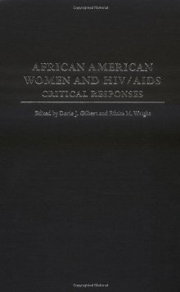
| Gilbert, Dorie J., and Ednita M. Wright, eds. African American Women and HIV/AIDS: Critical Responses. Westport, CT: Praeger Publishers, 2003. |
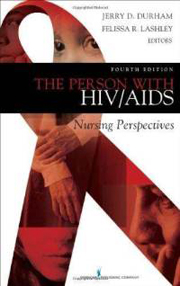
| Durham, Jerry D., and Felissa R. Lashley, eds. The Person with HIV/AIDS, 4thEdition: Nursing Perspectives. New York, NY: Springer Publishing Company, LLC, 2010. |
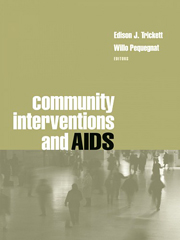
| Trickett, Edison J., and Willo Pequegnat, eds. Community Interventions and AIDS. New York, NY: Oxford University Press, Inc., 2005. |
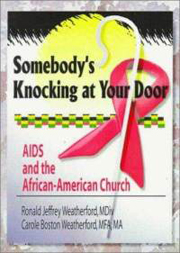
| Weatherford, Ronald Jeffrey, and Carole Boston Weatherford, and. Somebody’s Knocking at Your Door: AIDS and The African-American Church. Florence, KY: Routledge, 1998. |
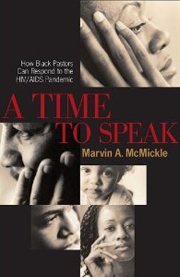
| McMickle, Marvin A. A Time to Speak: How Black Pastors Can Respond to the HIV/AIDS Pandemic. Cleveland, OH: Pilgrim Press, 2008. |
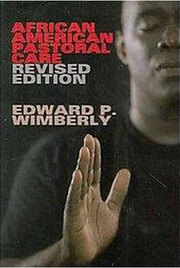
| Wimberly, Edward P. African American Pastoral Care: Revised Edition. Nashville, TN: Abingdon Press, 2008. |
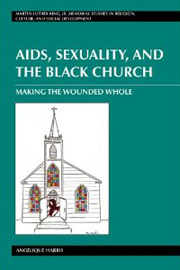
| Harris, Angelique. AIDS, Sexuality, and the Black Church: Making the Wounded Whole. New York, NY: Peter Lang, 2010. |
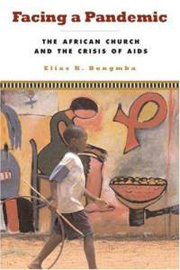
| Bongmba, Elias K. Facing a Pandemic: The African Church and the Crisis of AIDS. Waco, TX. Baylor University Press, 2007. |
XII. Notes for Select Songs
A. Hymn
- The Church’s One Foundation. By Samuel J. Stone
Location:
African American Heritage Hymnal. Chicago, IL: GIA Publications, 2001. #337
B. Well-Known Songs
- Lean on Me. By Bill Withers
Location:
Still Bill. Hollywood, CA: Sussex Records, 1972.
- Lay Aside Every Weight. By Dorothy Norwood
Location:
The Lord Is a Wonder. Jackson, MS: Malaco Records, 1999.
- Prayer Will Fix It. By Lashun Pace
Location:
A Wealthy Place. Jackson, MS: Savoy Records, 1996.
- Healed. By Donald Lawrence
Location:
I Speak Life. New York, NY: Verity Records, 2004.
- My Healing. By John P. Kee
Location:
The New Life Community Choir Featuring John P. Kee. Not Guilty. New York, NY: Verity Records, 2000.
C. Spirituals
- He’s Got to the Whole World in His Hands. By Obie Phillis
Location:
Jackson, Mahalia. Live at Newport, 1958. New York, NY: Columbia/Legacy Records, 1958.
- Hush! Hush! My Soul. By S. S. Morris. Tune by Edward C. Deas
Location:
African American Heritage Hymnal. #450
- I Will Restore. Text and Tune by Richard Johnson
Location:
Zion Still Sings for Every Generation. Nashville, TN: Abingdon Press, 2007. #115
- I Am Healed by the Wounds. Text and Tune by Virgin Davis
Location:
African American Heritage Hymnal. #528
- Remember Me. By J. Jefferson Cleveland
Location:
Zion Still Sings. #158
- Heal Me. Text and Tune by Terry MacAlmon
Location:
Zion Still Sings. #119
D. Modern Songs (Written between 2000–2010)
- He Saw the Best in Me. By Marvin Sapp
Location:
Here I Am. New York, NY: Verity Records, 2009.
- If I Tell God. By Kurt Carr
Location:
Carr, Kurt and the Kurt Carr Singers. One Church. Inglewood, CA: Gospocentric, 2005.
- The Healing Part. By Cece Winans
Location:
Songs of Emotional Healing. Brentwood, TN: EMI Gospel, 2010.
- Healing. By Kelly Price
Location:
This Is Who I Am. Inglewood, CA: Gospocentric, 2006.
E. Liturgical Dance Music
- More Than I Can Bear. By Kirk Franklin
Location:
God’s Property from Kirk Franklin’s Nu Nation. Inglewood, CA: Gospocentric, 1997.
- I’m Still Here. By Dorinda Clark-Cole
Location:
Dorinda Clark-Cole. Inglewood, CA: Gospocentric, 2002.
F. Song or Instrumental for the Period of Prayer
- Come by Here. African American Spiritual
Location:
Lead Me, Guide Me: The African American Catholic Hymnal. Chicago, IL: GIA Publications, 1987. #218
- Come by Here, My Lord. Text and Tune, (DESMOND), by Marvin V. Frey
Location:
African American Heritage Hymnal. #438
- You Are Healed/Rise and Be Healed. By Angela Courte
Location:
Power of Praise. Orlando, FL: Angela Courte, 2009.
G. Invitational Song or Instrumental
- I Need You to Survive. By Hezekiah Walker. This song should be sung at the end of the sermonic moment, when the invitation to Christian discipleship is extended.
Location:
Family Affair, Vol. 2: Live at Radio City Music Hall. New York, NY: Verity Records, 2002.
- He’s Calling You. By Charles G. Haynes
Location:
Hayes, Charles G. and The Warriors. The Remix. Chicago, IL: Icee Records, 2005.
- A Testimony. By Rodnie Bryant
Location:
My Father’s Business. Indianapolis, IN: Tyscot Records, 2005.
Notes
1. World Health Organization. “Who and HIV/Aids.” Online location: http://www.who.int accessed 5 August 2009
2.United States. U.S. Department of Health and Human Services. Aids Awareness Days. “World Aids Day.” Online location: www.hhs.gov/aidsawarenessdays/days/world accessed 5 August 2009
3. The Avert organization. “HIV and African Americans.” Online location: http://www.avert.org/hiv-african-americans.htm accessed 5 August 2009
4. Biddle, Perry H. Jr., ed. Preaching the Lectionary: A Workbook for Year C. Louisville, KY: Westminster John Knox, 1991, p. 27.
5. Copeland, M. Shawn. Enfleshing Freedom: Body, Race, and Being. Minneapolis, MN: Fortress Press, 2010, p. 68.
6. For these statistics and further information about the interconnection of AIDS and the African American community, see Avert.org. Online location: http://www.avert.org/hiv-african-americans.htm accessed 8 August 2009
7. Orr, William and James A. Walther. 1 Corinthians. (The Anchor Bible Commentary Series Volume 32). New York, NY: Doubleday, 1976, p. 287.
|